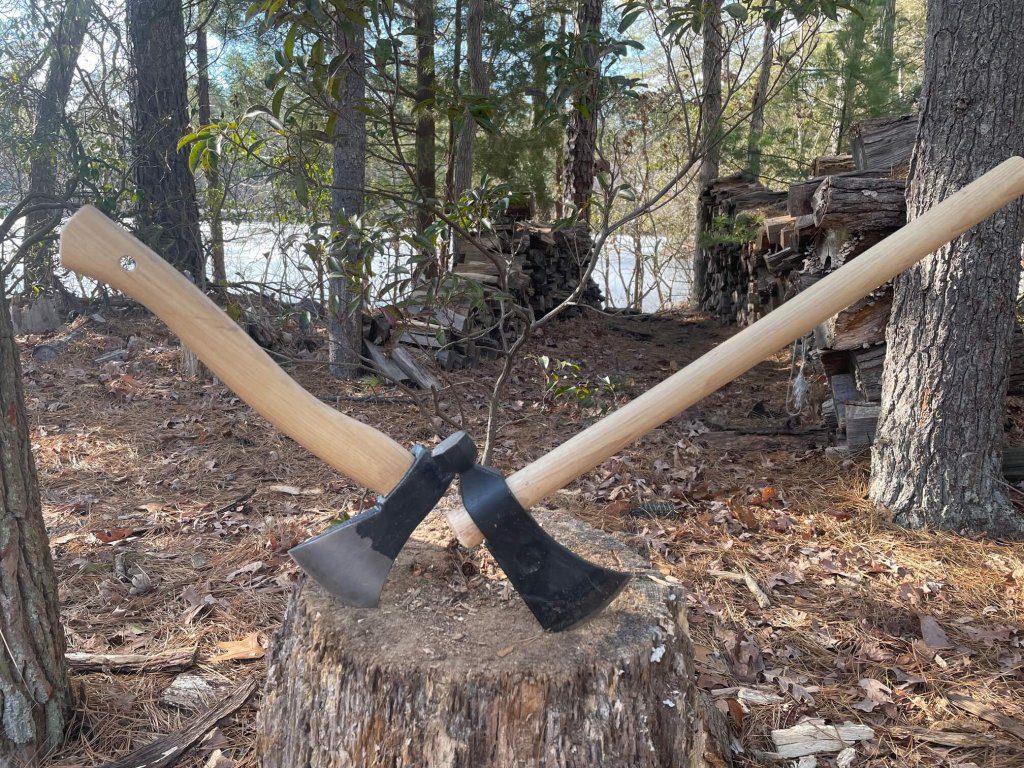
“Give me six hours to chop down a tree and I will spend the first four sharpening my ax.” ~Lincoln
I was doing some light batoning in the yard recently preparing some white oak for the fire when I got to thinking about hatchets and tomahawks – about their fundamental similarities and differences.
They functionally perform the same way; each one is a blade transversely mounted to a shaft that offers the users the mechanical advantage of being able to swing the blade. Basically, a knife on a stick, albeit in a configuration different from a spear, which is also a knife on a stick.
A hatchet (or tomahawk) as a smaller version of an ax (hatchet comes to us through French hachette, for “small ax”) is therefore by the kinship also one of the most useful tools that’s ever been developed.
Thousands of years later and far removed from its origins, we are still using axes, and the design has been optimized for so long there’s not much we can do to make it better.
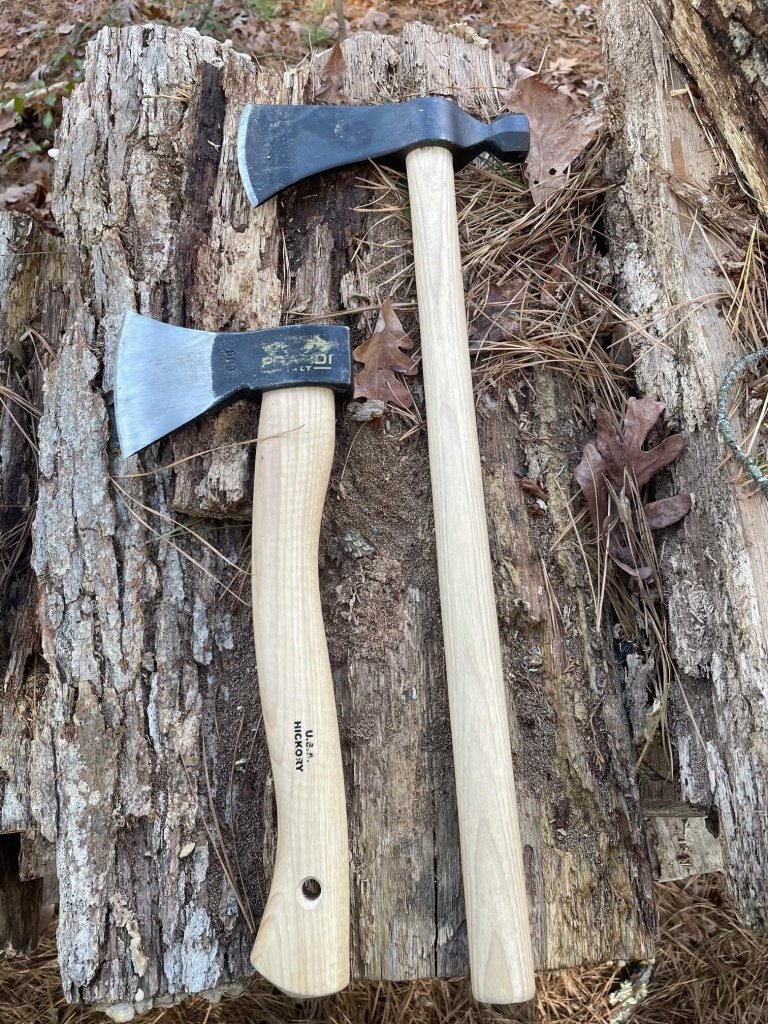
But that begs the question – is one better than the other? Is there a reason woodsmen should carry tomahawks over hatchets, or hatchets over tomahawks?
That is the very thing I intend to break down in this post.
On the Strength of the Hatchet
The main difference between a hatchet and a tomahawk is that (notwithstanding pattern and haft length) the head of a hatchet is permanently fixed on the haft.
This is accomplished via the aid of a carefully crafted eye (which corresponds roughly in size and shape to the eye through the head of the hatchet) and a series of wood and steel safety wedges.
In short, it is impossible to take the head off of a hatchet without breaking the haft. This naturally makes the design structurally much more sound than a tomahawk.
This means you can really whack the ever-loving hell out of a hatchet and (unless you break the handle) it’ll fare better.
In terms of splitting and chopping efficiency, one edge the hatchet has over the tomahawk is that it’s likely to have a heavier head, so it’s easier to put that mass to work for you.
The ergonomics of a hatchet are often better, too, as the design which allows the head to slip over the top (rather than up from the bottom) means that a hatchet can have a haft of nearly any size and shape. This is not the case for a hawk.
If you need power, therefore, the better of these two options is the hatchet.
One other thing I’ve noticed about the tomahawk which is a definite advantage is the design of the poll. It’s risky to use a hatchet as a hammering implement because if you strike with the poll and deform the eye (it can’t happen, I’ve done it) you can break the haft, and worst, re-hafting becomes more difficult.
With a tomahawk, the poll is typically connected to the rest of the head by a narrower isthmus of steel, and the poll is often specifically shaped for striking.
Because of the way it’s designed, you can get pretty aggressive hammering with a tomahawk poll. Also, if you did overdo it, you’d just damage the bit of steel connecting the poll to the rest of the hawk head, rather than deforming the eye. Even if you did deform the eye, since hawks just slip onto their hafts, it’s no big deal. You’d just have to cut the next handle with a slightly different shape. That makes them more forgiving.
The Drawbacks?
Now, are there any legitimate drawbacks of the hatchet? The one main thing that I can think of is that a hatchet’s head, being fixed to the handle, means that if you do break a haft in the field, it is exceedingly difficult to make a fix. You basically need to carve an entirely new handle, and the dimensions are not forgiving. It must fit the eye of the hatchet head nearly perfectly.
They are also on average a bit heavier, so if you are concerned with ultralight packing, a hatchet might not be for you. Then again, there are many that carry trail axes without any qualms, so take that with a grain of salt.
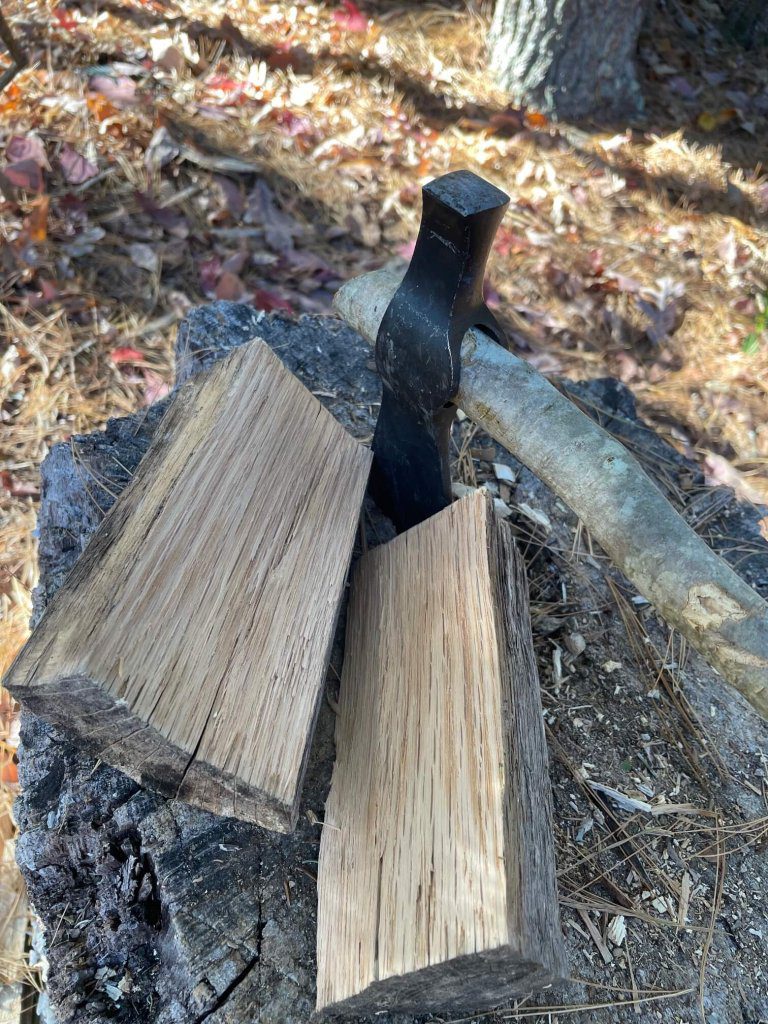
What’s So Good About Tomahawks?
The design of a tomahawk is fundamentally different from a hatchet. Let me back that up for a second. Both hatchets and hawks are used for chopping. But the manner in which the head is hung is usually fundamentally different.
The method for hanging a hatchet head has already been described. For the hawk, the handle is almost almost stick-straight, and the head is slipped up from the bottom. This is one big potential advantage of the tomahawk.
First, it means that the head can be easily removed by striking the butt of the haft, loosening it until it can be slipped off the bottom.
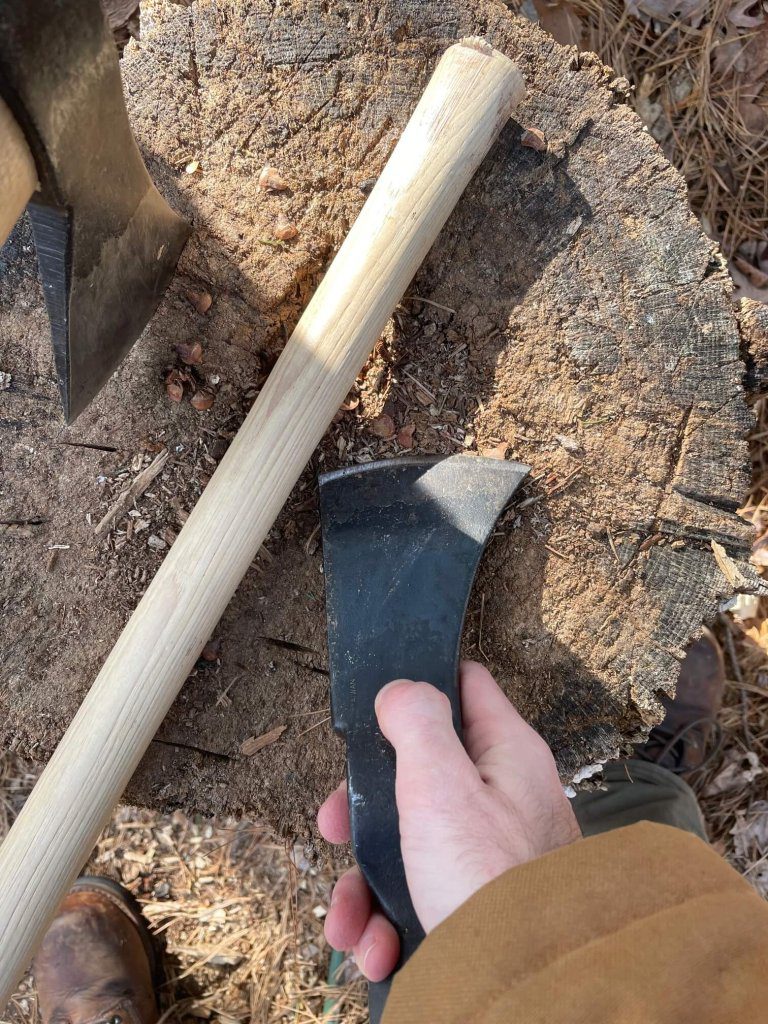
This gives you the ability to store or use the head and haft separately. It also means you can remove the tomahawk head for fine or detail work. For instance, you could remove the hawk head and use it for fleshing a hide, or for making push/chisel cuts, much more easily than a hatchet, since the haft would shift the balance, not to mention it would get in the way.
Because of this, tomahawks are, on the whole, more versatile than hatchets, although they are generally not as good for splitting as hatchets tend to be.
This design that enables you to easily remove the head also means it’s far easier to fashion a new hawk handle in the field. Check out what I made from a piece of holly in all of five minutes in the yard. Is it pretty? Definitely not – but I could make a new handle for this hawk in a couple minutes and I’d be out of luck if I broke my hatchet. That there is a definite advantage.
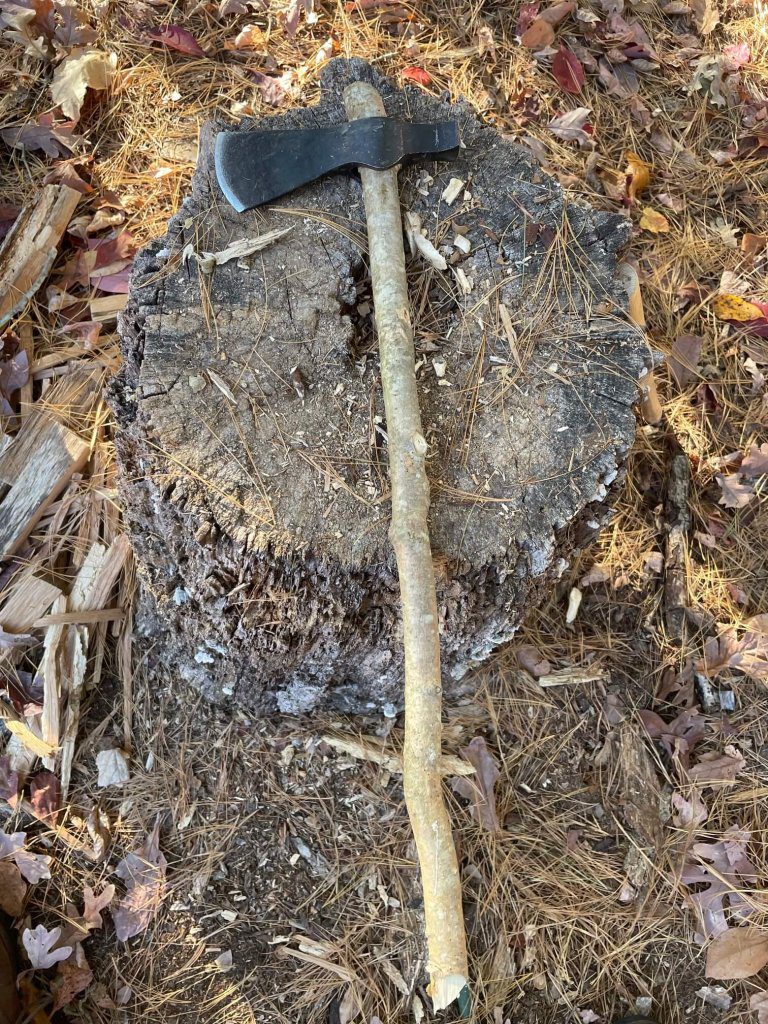
Another thing is that hatchets tend to come with longer handles than most hatchets, which means you get more leverage with swinging. This, unfortunately, does not always correspond to an advantage with splitting or cutting, because the cheeks of a hawk are nearly always flared out where they meet the eye – this is problematic because it means that the hawk will tend to bind in wood.
With that said, if you could find a tomahawk with more conventionally wedge-shaped and ax-ground cheeks that were wider, it would bite deep and split as well as if not better than a hatchet of similar weight, thanks to the length of the handle. So that actually could be an advantage rather than a drawback.
Shortcomings of the ‘Hawk
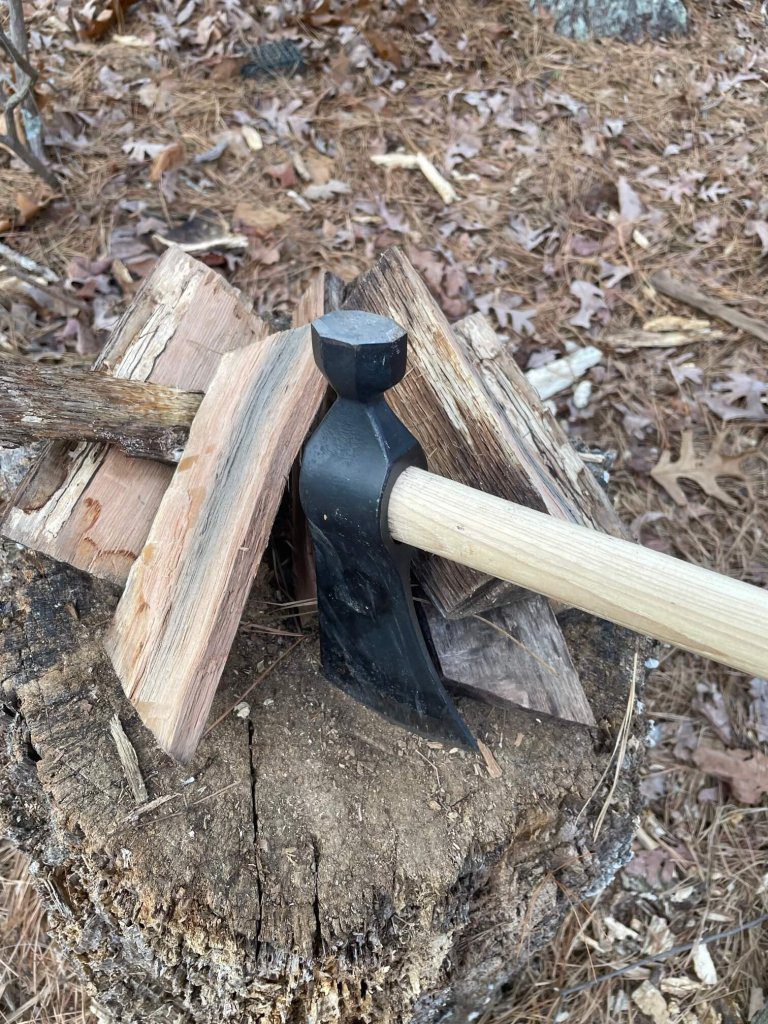
Now let’s talk about some things that make tomahawks somewhat less than they could be – although some of these have already been covered.
As I’ve stated, tomahawks tend to have pretty poorly designed profiles that tend to bind in wood rather than splitting efficiently.
The ergonomics of the straight haft are not as good as those of a quality hatchet, making it much less comfortable to use a tomahawk for prolonged periods of time.
They also tend to be lighter, which means you can’t put as much power behind them. This is a bit of a catch-22 since they usually have longer handles. It tends to cancel out.
Hatchet vs. Tomahawk: Decide for Yourself
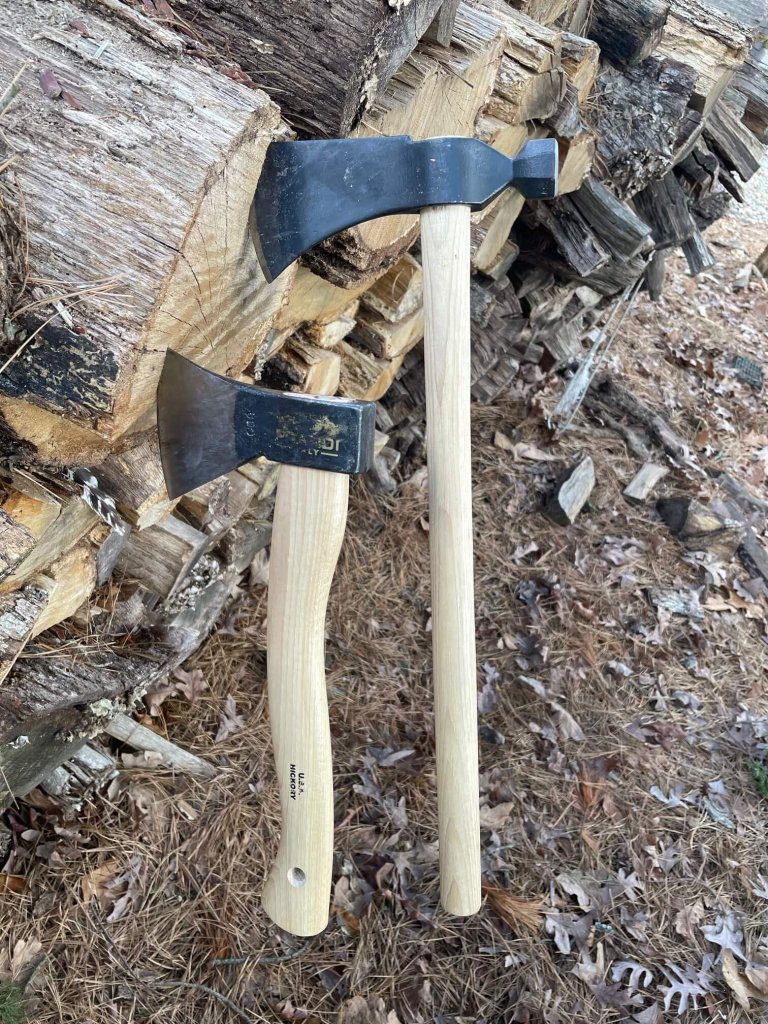
Ultimately, I have to defer. There are just too many strong points of both hatchets and tomahawks that it’s impossible to say that one is better than the other. They both do similar things very well. If you had to carry just one, it hardly matters which. Just play to the strengths of what you carry.
All in all, I think that for most intents and purposes, the hatchet is the better call. But I could also see a sportsman confidently carrying a tomahawk.
Anyway, I wrote this on a whim. Let me know your thoughts in the comments.
Stay sharp.
~The Eclectic Outfitter
Wow,superb blog layout! How long have you been blogging for?
you make blogging look easy. The overall look of your web sie
is magnificent, let alone the content!